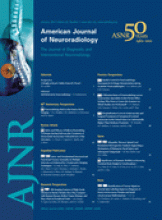Abstract
SUMMARY: Murine models are the most commonly used and best investigated among the animal models of HGG. They constitute an important weapon in the development and testing of new anticancer drugs and have long been used in preclinical trials. Neuroimaging methods, particularly MR imaging, offer important advantages for the evaluation of treatment response: shorter and more reliable treatment end points and insight on tumor biology and physiology through the use of functional imaging DWI, PWI, BOLD, and MR spectroscopy. This functional information has been progressively consolidated as a surrogate marker of tumor biology and genetics and may play a pivotal role in the assessment of specifically targeted drugs, both in clinical and preclinical trials. The purpose of this Research Perspectives was to compile, summarize, and critically assess the available information on the neuroimaging features of different murine models of HGGs, and explain how these correlate with human disease and reflect tumor biology.
ABBREVIATIONS:
- AIF
- arterial input function
- ATP
- adenosine triphosphate
- BOLD
- blood oxygen level—dependent
- DCE
- dynamic contrast-enhanced
- DSC
- dynamic susceptibility contrast
- FLASH
- fast low-angle shot
- gadolinium-DTPA
- gadolinium-diethylene-triamine pentaacetic acid
- GEMM
- genetically engineered mouse model
- GRE
- gradient recalled-echo
- HGG
- high-grade glioma
- MMP2
- matrix metalloproteinase type 2
- MVD
- mean vascular density
- rCBV
- relative cerebral blood volume
- VEGF
- vascular endothelial growth factor
- © 2012 by American Journal of Neuroradiology
Indicates open access to non-subscribers at www.ajnr.org












